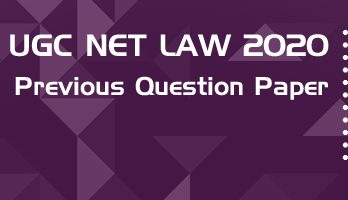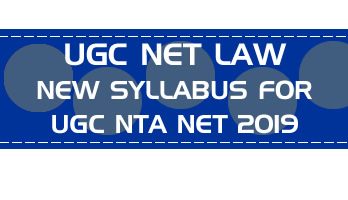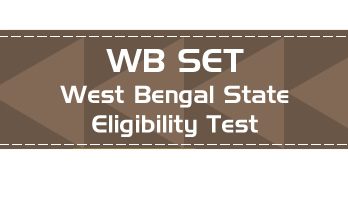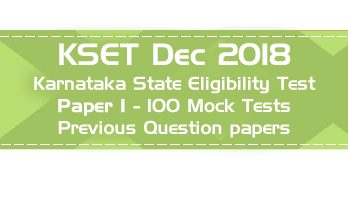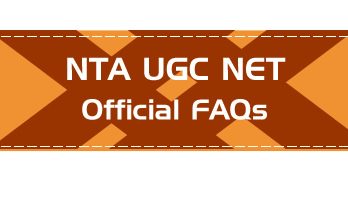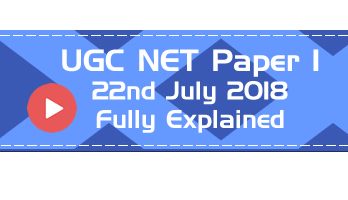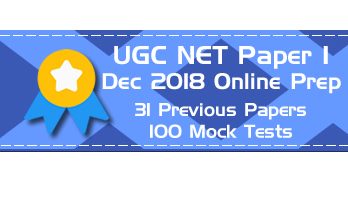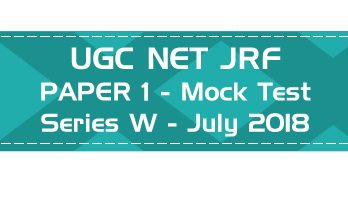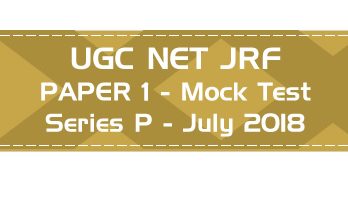- Latest Pattern Mock Tests including comprehension based questions
- Previous Question Papers with Answer Keys - From 2004 till the most recent exam
- 75 Full Length Mock Tests - New Pattern Paper II, with 100 questions each
- 50 Mini Practice Mock tests - with 25 questions each
- Unlimited Practice - New Questions in every attempt of all mocks
- Questions & Answer Choices randomly shuffled in every attempt for better practice
- Database of over 11000+ MCQs covering the entire syllabus
- Unlimited access and practice for one year from the date of purchase
- Accessible 24 x 7 via Smart-Phone browsers and Desktops
Authentic Feedback from previous LawMint users :
I got AIR 21 in CLAT PG. Thank you so much. Your mocks helped me a lot in my preparation 🙂 - Ayushi Jain
I have subscribed to your CLAT PG program and got AIR 36 in this year CLAT PG. I have also secured AIR 54 in AILET PG exam. I would like to thank you. Your mock paper really helps a lot - Shrashank Tripathi
I would like to thank you for the CLAT PG LLM COURSE. Practising mock tests there helped me in getting confidence and hence I was able to get AIR 45 in CLAT PG LLM - Akshay Awasthi
A year back, I relied on the IIT Kharagpur RGSOIPL mock test series by LawMint to prepare for my RGSOIPL entrance test. Few months back, I relied on your UGC NET Law series to prepare for UGC NET. I was the topper of the RGSOIPL entrance, and have cracked JRF in UGC NET. All thanks to LawMint - Anshuman Sahoo
"I got AIR 18 in CLAT PG and General Category rank 28 in AILET PG. I want to thank you for helping me practice well in controlled conditions from any place. It gave me a lot of confidence and I took the tests while travelling too. I also made it to IIT Kharagpur." - Vinodharani
"Lawmint has been of great help to me in securing AIR 25 in AILET PG and AIR 29 in CLAT PG examinations. The subjective and objective approach of the test series kept me up to date with the latest exam pattern." - Bhawna Nanda
"I, Nimmy Saira Zachariah joined you clat test series. I cleared AILET PG with 30th rank. Your test series were of immense help as it gave me clear idea of where my preparations stand thank you once again law mint." - Nimmy S Z
"Hey guys. Where do I start? If I thought that getting AIR 59 in Clat PG was it, then how wrong I was. With Lawmint now I have cracked UGC NET as well." - Joyanta Chakraborty
Note : Answer Keys to all Previous Question Papers published on LawMint are available to registered users of LawMint.com Online Practice Packs.
Check out all the HECI NTA NET or UGC CBSE NET Paper 1 previous question papers here : Previous Papers & Mock Tests
Note : UGC has rolled out a revised syllabus for both Papers 1 & 2 from Jan 2019 onward.
1. CSS stands for
– Cascading Style Sheets
– Collecting Style Sheets
– Comparative Style Sheets
– Comprehensive Style Sheets
2. MOOC stands for
– Media Online Open Course
– Massachusetts Open Online Course
– Massive Open Online Course
– Myrind Open Online Course
3. Binary equivalent of decimal number 35 is
– 100011
– 110001
– 110101
– 101011
4. gif, jpg, bmp, png are used as extensions for files which store
– Audio data
– Image data
– Video data
– Text data
5. Symbols A-F are used in which one of the following?
– Binary number system
– Decimal number system
– Hexadecimal number system
– Octal number system
6. Which one of the following is not a search engine?
– Google
– Chrome
– Yahoo
– Bing
7. In terms of total CO2 emissions from a country, identity the correct sequence:
– U.S.A. > China > India > Russia
– China > U.S.A. > India > Russia
– China > U.S.A. > Russia > India
– U.S.A. > China > Russia > India
8. Match List – I and List – II and identify the correct code:
List – I
a. World Health Day
b. World Population Day
c. World Ozone Day
d. World AIDS Day
List – II
i. 16th September
ii. 1st December
iii. 11th July
iv. 7th April
Choose the answer that corresponds to the sequence : a, b, c, d
– i ii iii iv
– iv iii i ii
– ii iii iv i
– iii iv ii i
9. Which of the anthropogenic activity accounts for more than 2/3rd of global water consumption?
– Agriculture
– Hydropower generation
– Industry
– Domestic and Municipal usage
10. One of the anthropogenic sources of gaseous pollutants chlorofluorocarbons (CFCs) in air is
– Cement Industry
– Fertiliser industry
– Foam industry
– Pesticide industry
11. The maximum number of fake institutions / universities as identified by the UGC in the year 2014 are in the State / Union territory of
– Bihar
– Uttar Pradesh
– Tamil Nadu
– Delhi
12. Which of the following institutions are empowered to confer or grant degrees under the UGC Act, 1956?
1. A university established by an Act of Parliament.
2. A university established by an Act of Legislature.
3. A university / institution established by a linguistic minority.
4. An institution which is a deemed to be university.
– 1 and 2
– 1, 2 and 3
– 1, 2 and 4
– 1, 2, 3 and 4
13. Which of the following are the tools of good governance?
1. Social Audit
2. Separation of Powers
3. Citizen’s Charter
4. Right to Information
– 1, 3 and 4
– 2, 3 and 4
– 1 and 4
– 1, 2, 3, and 4
14. The cyclone “Hudhud” hit the coast of which State?
– Andhra Pradesh
– Karnataka
– Kerala
– Gujarat
15. Which of the following is not a renewable natural resource?
– Clean air
– Fresh water
– Fertile soil
– Salt
16. Right to privacy as a Fundamental Right is implied in
– Right to Freedom
– Right to Life and Personal Liberty
– Right to Equality
– Right against Exploitation
17. Which of the following organizations deals with “capacity building programe” on Educational Planning?
– NCERT
– UGC
– NAAC
– NUEPA
18. Which of the following powers, the President has in relation to Lok Sabha?
1. Summoning
2. Adjournment – sine die
3. Prorogation
4. Dissolution
– 1 and 4
– 1, 2 and 3
– 1, 3 and 4
– 1, 2, 3 and 4
19. The interval between two sessions of parliament must not exceed
– 3 months
– 6 months
– 4 months
– 100 days
20. Maximum participation of students during teaching is possible through
– Lecture method
– Demonstration method
– Inductive method
– Textbook method
21. Diagnostic evaluation ascertains
– Students performance at the beginning of instructions.
– Learning progress and failures during instructions.
– Degree of achievements of instructions at the end.
– Causes and remedies of persistent learning problems during instructions.
22. Instructional aides are used by the teacher to
– Glorify the class
– Attract the students
– Clarify the concepts
– Ensure discipline
23. Attitude of the teacher that affects teaching pertains to
– Affective domain
– Cognitive domain
– Connative domain
– Psychomotor domain
24. “Education is the manifestation of perfection already in man” was stated by
– M. K. Gandhi
– R. N. Tagore
– Swami Vivekanand
– Sri Aurobindo
25. Which of the following is not a prescribed level of teaching?
– Memory
– Understanding
– Reflective
– Differentiation
26. The core elements of dissertation are
– Introduction; Data Collection; Data Analysis; Conclusions and Recommendations
– Executive Summary; Literature review; Data gathered; Conclusions; Bibliography
– Research Plan; Research Data; Analysis; References
– Introduction; Literature Review; Research Methodology; Results; Discussion and Conclusion
27. What is a Research Design?
– A way of conducting research that is not grounded in theory.
– The choice between using qualitative or quantitative methods.
– The style in which you present your research findings e.g. a graph.
– A framework for every stage of the collection and analysis of data.
28. “Sampling Cases” means
– Sampling using a sampling frame
– Identifying people who are suitable for research
– Literally the researcher’s brief case
– Sampling of people, newspapers, television programmes etc.
29. The frequency distribution of a research data which is symmetrical in shape similar to a normal distribution but center peak is much higher, is
– Skewed
– Mesokurtic
– Leptokurtic
– Platykurtic
30. When planning to do a social research, it is better to
– Approach the topic with an open mind
– Do a pilot study before getting stuck into it
– Be familiar with literature on the topic
– Forget about theory because this is a very practical
31. When academicians are called to deliver lecture or presentations to an audience on certain topics or a set of topics of educational nature, it is called
– Training Program
– Seminar
– Workshop
– Symposium
32. Media is known as
– First Estate
– Second Estate
– Third Estate
– Fourth Estate
33. The mode of communication that involves a single source transmitting information to a large number of receivers simultaneously, is called
– Group Communication
– Mass Communication
– Intrapersonal Communication
– Interpersonal Communication
34. A smart classroom is a teaching space which has
(i) Smart portion with a touch panel control system.
(ii) PC/Laptop connection and DVD/VCR player.
(iii) Document camera and specialized software
(iv) Projector and screen
– (i) and (ii) only
– (ii) and (iv) only
– (i), (ii) and (iii) only
– (i), (ii), (iii) and (iv)
35. The term “Yellow Journalism” refers to
– Sensational news about terrorism and violence
– Sensationalism and exaggeration to attract readers / viewers.
– Sensational news about arts and culture.
– Sensational news prints in yellow paper.
36. In the classroom, the teacher sends the message either as words or images. The students are really
– Encoders
– Decoders
– Agitators
– Propagators
37. The next term in the series: AB, ED, IH, NM is
– TS
– ST
– TU
– SU
38. If STREAMERS is coded as UVTGALDQR, then KNOWLEDGE will be coded as
– MQPYLCDFD
– MPQYLDCFD
– PMYQLDFCD
– YMQPLDDFC
39. A is brother of B. B is the brother of C. C is the husband of D. E is the father of A. D is related to E as
– Daughter
– Daughter-in-law
– Sister-in-law
– Sister
40. Two numbers are in the ration 3:5. If 9 is subtracted from the numbers, the ratio becomes 12:23. The numbers are
– 30, 50
– 36, 60
– 33, 55
– 42, 70
41. The mean of the ages of father and his son is 27 years. After 18 years, father will be twice as old as his son. Their present ages are
– 42, 12
– 40, 14
– 30, 24
– 36, 18
42. Digital Empowerment means :
(i) Universal digit literacy
(ii) Universal access to all digital resources
(iii) Collaborative digital platform for participative governance.
(iv) Probability of all entitlements for individuals through cloud.
– (i) and (ii) only
– (ii) and (iii) only
– (i), (ii) and (iii) only
– (i), (ii), (iii) and (iv)
43. The next term in the series: 2, 7, 28, 63, 126, — is
– 215
– 245
– 276
– 296
44. Read the following passage carefully and answer the question :
The literary distaste for politics, however, seems to be focused not so much on the largely murky practice of politics in itself as a subject of literary representation but rather more on how it is often depicted in literature, i.e., on the very politics of such representation. A political novel often turns out to be not merely a novel about politics but a novel with a politics of its own, for it seeks not merely to show us how things are but has fairly definite ideas about how things should be, and precisely what one should think and do in order to make things move in that desired direction. In short, it seeks to convert and enlist the reader to a particular cause or ideology; it often is (in an only too familiar phrase) not literature but propaganda. This is said to violate the very spirit of literature which is to broaden our understanding of the world and the range of our sympathies rather than to narrow them down through partisan commitment. As John Keats said, ‘We hate poetry that has a palpable design upon us’.
Another reason why politics does not seem amenable to the highest kind of literary representation seems to arise from the fact that politics by its very nature is constituted of ideas and ideologies. If political situations do not lend themselves to happy literary treatment, political ideas present perhaps an even greater problem in this regard. Literature, it is argued, is about human experiences rather than about intellectual abstractions; it deals in what is called the ‘felt reality’ of human flesh and blood, and in sap and savour. (rasa) rather than in and lifeless ideas. In an extensive discussion of the matter in her book Ideas and the Novel, the American novelist Mary McCarthy observed that ‘ideas are still today felt to be unsightly in the novel’ though that was not so in ‘former days’, i.e., in the 18th and 19th centuries. Her formulation of the precise nature of the incompatibility between ideas on the one hand and the novel on the other betrays perhaps a divided conscience in the matter and a sense of dilemma shared by many writers and readers: ‘An idea cannot have loose ends, but a novel, I almost think, needs them. Nevertheless, there is enough in common for the novelists to feel_ the attraction of ideas while taking up arms against them — most often with weapons of mockery.’
The constructs of politics by its nature is
– Prevalent political situation
– Ideas and Ideologies
– Political propaganda
– Understanding of human nature
45. Read the following passage carefully and answer the question :
The literary distaste for politics, however, seems to be focused not so much on the largely murky practice of politics in itself as a subject of literary representation but rather more on how it is often depicted in literature, i.e., on the very politics of such representation. A political novel often turns out to be not merely a novel about politics but a novel with a politics of its own, for it seeks not merely to show us how things are but has fairly definite ideas about how things should be, and precisely what one should think and do in order to make things move in that desired direction. In short, it seeks to convert and enlist the reader to a particular cause or ideology; it often is (in an only too familiar phrase) not literature but propaganda. This is said to violate the very spirit of literature which is to broaden our understanding of the world and the range of our sympathies rather than to narrow them down through partisan commitment. As John Keats said, ‘We hate poetry that has a palpable design upon us’.
Another reason why politics does not seem amenable to the highest kind of literary representation seems to arise from the fact that politics by its very nature is constituted of ideas and ideologies. If political situations do not lend themselves to happy literary treatment, political ideas present perhaps an even greater problem in this regard. Literature, it is argued, is about human experiences rather than about intellectual abstractions; it deals in what is called the ‘felt reality’ of human flesh and blood, and in sap and savour. (rasa) rather than in and lifeless ideas. In an extensive discussion of the matter in her book Ideas and the Novel, the American novelist Mary McCarthy observed that ‘ideas are still today felt to be unsightly in the novel’ though that was not so in ‘former days’, i.e., in the 18th and 19th centuries. Her formulation of the precise nature of the incompatibility between ideas on the one hand and the novel on the other betrays perhaps a divided conscience in the matter and a sense of dilemma shared by many writers and readers: ‘An idea cannot have loose ends, but a novel, I almost think, needs them. Nevertheless, there is enough in common for the novelists to feel_ the attraction of ideas while taking up arms against them — most often with weapons of mockery.’
Literature deals with
– Human experiences in politics
– Intellectual abstractions
– Dry and empty ideas
– Felt reality of human life
46. Read the following passage carefully and answer the question :
The literary distaste for politics, however, seems to be focused not so much on the largely murky practice of politics in itself as a subject of literary representation but rather more on how it is often depicted in literature, i.e., on the very politics of such representation. A political novel often turns out to be not merely a novel about politics but a novel with a politics of its own, for it seeks not merely to show us how things are but has fairly definite ideas about how things should be, and precisely what one should think and do in order to make things move in that desired direction. In short, it seeks to convert and enlist the reader to a particular cause or ideology; it often is (in an only too familiar phrase) not literature but propaganda. This is said to violate the very spirit of literature which is to broaden our understanding of the world and the range of our sympathies rather than to narrow them down through partisan commitment. As John Keats said, ‘We hate poetry that has a palpable design upon us’.
Another reason why politics does not seem amenable to the highest kind of literary representation seems to arise from the fact that politics by its very nature is constituted of ideas and ideologies. If political situations do not lend themselves to happy literary treatment, political ideas present perhaps an even greater problem in this regard. Literature, it is argued, is about human experiences rather than about intellectual abstractions; it deals in what is called the ‘felt reality’ of human flesh and blood, and in sap and savour. (rasa) rather than in and lifeless ideas. In an extensive discussion of the matter in her book Ideas and the Novel, the American novelist Mary McCarthy observed that ‘ideas are still today felt to be unsightly in the novel’ though that was not so in ‘former days’, i.e., in the 18th and 19th centuries. Her formulation of the precise nature of the incompatibility between ideas on the one hand and the novel on the other betrays perhaps a divided conscience in the matter and a sense of dilemma shared by many writers and readers: ‘An idea cannot have loose ends, but a novel, I almost think, needs them. Nevertheless, there is enough in common for the novelists to feel_ the attraction of ideas while taking up arms against them — most often with weapons of mockery.’
The observation of the novelist, May McCarthy reveals
– Unseen felt ideas of today in the novel
– Dichotomy of conscience on political ideas and novels
– Compatibility between idea and novel
– Endless idea and novels
47. Read the following passage carefully and answer the question :
The literary distaste for politics, however, seems to be focused not so much on the largely murky practice of politics in itself as a subject of literary representation but rather more on how it is often depicted in literature, i.e., on the very politics of such representation. A political novel often turns out to be not merely a novel about politics but a novel with a politics of its own, for it seeks not merely to show us how things are but has fairly definite ideas about how things should be, and precisely what one should think and do in order to make things move in that desired direction. In short, it seeks to convert and enlist the reader to a particular cause or ideology; it often is (in an only too familiar phrase) not literature but propaganda. This is said to violate the very spirit of literature which is to broaden our understanding of the world and the range of our sympathies rather than to narrow them down through partisan commitment. As John Keats said, ‘We hate poetry that has a palpable design upon us’.
Another reason why politics does not seem amenable to the highest kind of literary representation seems to arise from the fact that politics by its very nature is constituted of ideas and ideologies. If political situations do not lend themselves to happy literary treatment, political ideas present perhaps an even greater problem in this regard. Literature, it is argued, is about human experiences rather than about intellectual abstractions; it deals in what is called the ‘felt reality’ of human flesh and blood, and in sap and savour. (rasa) rather than in and lifeless ideas. In an extensive discussion of the matter in her book Ideas and the Novel, the American novelist Mary McCarthy observed that ‘ideas are still today felt to be unsightly in the novel’ though that was not so in ‘former days’, i.e., in the 18th and 19th centuries. Her formulation of the precise nature of the incompatibility between ideas on the one hand and the novel on the other betrays perhaps a divided conscience in the matter and a sense of dilemma shared by many writers and readers: ‘An idea cannot have loose ends, but a novel, I almost think, needs them. Nevertheless, there is enough in common for the novelists to feel_ the attraction of ideas while taking up arms against them — most often with weapons of mockery.’
According to the passage, a political novel often turns out to be a
– Literary distaste for politics
– Literary representation of politics
– Novels with its own politics
– Depiction of murky practice of politics
48. Read the following passage carefully and answer the question :
The literary distaste for politics, however, seems to be focused not so much on the largely murky practice of politics in itself as a subject of literary representation but rather more on how it is often depicted in literature, i.e., on the very politics of such representation. A political novel often turns out to be not merely a novel about politics but a novel with a politics of its own, for it seeks not merely to show us how things are but has fairly definite ideas about how things should be, and precisely what one should think and do in order to make things move in that desired direction. In short, it seeks to convert and enlist the reader to a particular cause or ideology; it often is (in an only too familiar phrase) not literature but propaganda. This is said to violate the very spirit of literature which is to broaden our understanding of the world and the range of our sympathies rather than to narrow them down through partisan commitment. As John Keats said, ‘We hate poetry that has a palpable design upon us’.
Another reason why politics does not seem amenable to the highest kind of literary representation seems to arise from the fact that politics by its very nature is constituted of ideas and ideologies. If political situations do not lend themselves to happy literary treatment, political ideas present perhaps an even greater problem in this regard. Literature, it is argued, is about human experiences rather than about intellectual abstractions; it deals in what is called the ‘felt reality’ of human flesh and blood, and in sap and savour. (rasa) rather than in and lifeless ideas. In an extensive discussion of the matter in her book Ideas and the Novel, the American novelist Mary McCarthy observed that ‘ideas are still today felt to be unsightly in the novel’ though that was not so in ‘former days’, i.e., in the 18th and 19th centuries. Her formulation of the precise nature of the incompatibility between ideas on the one hand and the novel on the other betrays perhaps a divided conscience in the matter and a sense of dilemma shared by many writers and readers: ‘An idea cannot have loose ends, but a novel, I almost think, needs them. Nevertheless, there is enough in common for the novelists to feel_ the attraction of ideas while taking up arms against them — most often with weapons of mockery.’
A political novel reveals
– Reality of the tings
– Writer’s perception
– Particular ideology of the readers
– The spirit of literature
49. Warrior is related to sword, carpenter is related to saw, farmer is related to plough. In the same way, the author is related to
– Book
– Fame
– Reader
– Pen
50. Given below is a diagram of three circles A, B and C over-lapping each other.
The circle A represents the class of honest people, the circle B represent the class of sincere people and circle C represents the class of politicians. p, q, r, s, U, X, Y represent different regions. Select the code that represents the region indicating the class of honest politicians who are not sincere.
– X
– q
– p
– s
51. “A man ought no more to value himself for being wiser than a woman if he owes his advantage to a better education, than he ought to boast of his courage for beating a man when his hands were tied.” The above passage is an instance of
– Deductive argument
– Hypothetical argument
– Analogical argument
– Factual argument
52. By which of the following proposition, the proposition “wise men are hardly afraid of death” is contradicted?
– Some wise men are afraid of death.
– All wise men are afraid of death.
– No wise men is afraid of death.
– Some wise men are not afraid of death.
53. When in a group of propositions, one proposition is claimed to follow from the others, that group of propositions is called
– An argument
– A valid argument
– An explanation
– An invalid argument
54. Namita and Samita are brilliant and studious. Anita and karabi are obedient and irregular. Babita and Namita are irregular but brilliant. Samita and Kabita are regular and obedient. Who among them is/are brilliant, obedient, regular and studious?
– Samita alone
– Namita and Samita
– Kabita alone
– Anita alone
55. For a country CO2 emissions (million metric tons) from various sectors are given in the following table. Answer the question based on the data given.
C02 emissions (million metric tons) | |||||
Sector | Power | Industry | Commercial | Agriculture | Domestic |
2005 | 500 | 200 | 150 | 80 | 100 |
2006 | 600 | 300 | 200 | 90 | 110 |
2007 | 650 | 320 | 250 | 100 | 120 |
2008 | 700 | 400 | 300 | 150 | 150 |
2009 | 800 | 450 | 320 | 200 | 180 |
By what percentage (%), the total emissions of CO2 have increased from 2005 to 2009?
– ~89.32%
– ~57.62%
– ~40.32%
– ~113.12%
56. For a country CO2 emissions (million metric tons) from various sectors are given in the following table. Answer the question based on the data given.
C02 emissions (million metric tons) | |||||
Sector | Power | Industry | Commercial | Agriculture | Domestic |
2005 | 500 | 200 | 150 | 80 | 100 |
2006 | 600 | 300 | 200 | 90 | 110 |
2007 | 650 | 320 | 250 | 100 | 120 |
2008 | 700 | 400 | 300 | 150 | 150 |
2009 | 800 | 450 | 320 | 200 | 180 |
What is the average annual growth rate of CO2 emission in power sector?
– ~12.57%
– ~16.87%
– ~30.81%
– ~50.25%
57. For a country CO2 emissions (million metric tons) from various sectors are given in the following table. Answer the question based on the data given.
C02 emissions (million metric tons) | |||||
Sector | Power | Industry | Commercial | Agriculture | Domestic |
2005 | 500 | 200 | 150 | 80 | 100 |
2006 | 600 | 300 | 200 | 90 | 110 |
2007 | 650 | 320 | 250 | 100 | 120 |
2008 | 700 | 400 | 300 | 150 | 150 |
2009 | 800 | 450 | 320 | 200 | 180 |
What is the percentage contribution of power sector to total CO2 emission in the year 2008?
– ~30.82%
– ~41.18%
– ~51.38%
– ~60.25%
58. For a country CO2 emissions (million metric tons) from various sectors are given in the following table. Answer the question based on the data given.
C02 emissions (million metric tons) | |||||
Sector | Power | Industry | Commercial | Agriculture | Domestic |
2005 | 500 | 200 | 150 | 80 | 100 |
2006 | 600 | 300 | 200 | 90 | 110 |
2007 | 650 | 320 | 250 | 100 | 120 |
2008 | 700 | 400 | 300 | 150 | 150 |
2009 | 800 | 450 | 320 | 200 | 180 |
In which year, the contribution (%) of industry to total sectoral CO2 emission was minimum?
– 2005
– 2006
– 2007
– 2008
59. For a country CO2 emissions (million metric tons) from various sectors are given in the following table. Answer the question based on the data given.
C02 emissions (million metric tons) | |||||
Sector | Power | Industry | Commercial | Agriculture | Domestic |
2005 | 500 | 200 | 150 | 80 | 100 |
2006 | 600 | 300 | 200 | 90 | 110 |
2007 | 650 | 320 | 250 | 100 | 120 |
2008 | 700 | 400 | 300 | 150 | 150 |
2009 | 800 | 450 | 320 | 200 | 180 |
What is the percentage (%) growth of CO2 emission from power sector during 2005 to 2009?
– 60
– 50
– 40
– 80
60. For a country CO2 emissions (million metric tons) from various sectors are given in the following table. Answer the question based on the data given.
C02 emissions (million metric tons) | |||||
Sector | Power | Industry | Commercial | Agriculture | Domestic |
2005 | 500 | 200 | 150 | 80 | 100 |
2006 | 600 | 300 | 200 | 90 | 110 |
2007 | 650 | 320 | 250 | 100 | 120 |
2008 | 700 | 400 | 300 | 150 | 150 |
2009 | 800 | 450 | 320 | 200 | 180 |
Which sector has recorded maximum growth in CO2 emission during 2005 to 2009?
– Power
– Industry
– Commercial
– Agriculture
- Latest Pattern Mock Tests including comprehension based questions
- Previous Question Papers with Answer Keys - From 2004 till the most recent exam
- 75 Full Length Mock Tests - New Pattern Paper II, with 100 questions each
- 50 Mini Practice Mock tests - with 25 questions each
- Unlimited Practice - New Questions in every attempt of all mocks
- Questions & Answer Choices randomly shuffled in every attempt for better practice
- Database of over 11000+ MCQs covering the entire syllabus
- Unlimited access and practice for one year from the date of purchase
- Accessible 24 x 7 via Smart-Phone browsers and Desktops
Authentic Feedback from previous LawMint users :
I got AIR 21 in CLAT PG. Thank you so much. Your mocks helped me a lot in my preparation 🙂 - Ayushi Jain
I have subscribed to your CLAT PG program and got AIR 36 in this year CLAT PG. I have also secured AIR 54 in AILET PG exam. I would like to thank you. Your mock paper really helps a lot - Shrashank Tripathi
I would like to thank you for the CLAT PG LLM COURSE. Practising mock tests there helped me in getting confidence and hence I was able to get AIR 45 in CLAT PG LLM - Akshay Awasthi
A year back, I relied on the IIT Kharagpur RGSOIPL mock test series by LawMint to prepare for my RGSOIPL entrance test. Few months back, I relied on your UGC NET Law series to prepare for UGC NET. I was the topper of the RGSOIPL entrance, and have cracked JRF in UGC NET. All thanks to LawMint - Anshuman Sahoo
"I got AIR 18 in CLAT PG and General Category rank 28 in AILET PG. I want to thank you for helping me practice well in controlled conditions from any place. It gave me a lot of confidence and I took the tests while travelling too. I also made it to IIT Kharagpur." - Vinodharani
"Lawmint has been of great help to me in securing AIR 25 in AILET PG and AIR 29 in CLAT PG examinations. The subjective and objective approach of the test series kept me up to date with the latest exam pattern." - Bhawna Nanda
"I, Nimmy Saira Zachariah joined you clat test series. I cleared AILET PG with 30th rank. Your test series were of immense help as it gave me clear idea of where my preparations stand thank you once again law mint." - Nimmy S Z
"Hey guys. Where do I start? If I thought that getting AIR 59 in Clat PG was it, then how wrong I was. With Lawmint now I have cracked UGC NET as well." - Joyanta Chakraborty
Note : Answer Keys to all Previous Question Papers published on LawMint are available to registered users of our Online Practice Packs.
Check out all the HECI NTA NET or UGC CBSE NET Paper 1 previous question papers here : Previous Papers & Mock Tests


